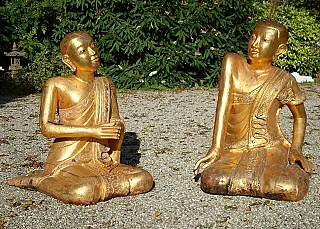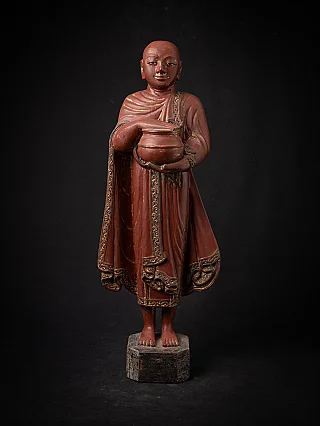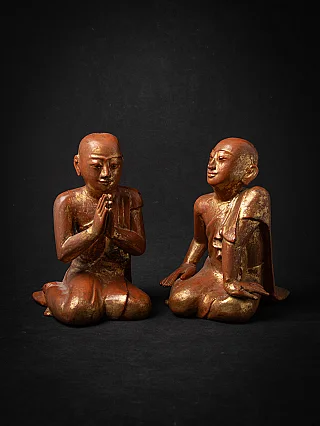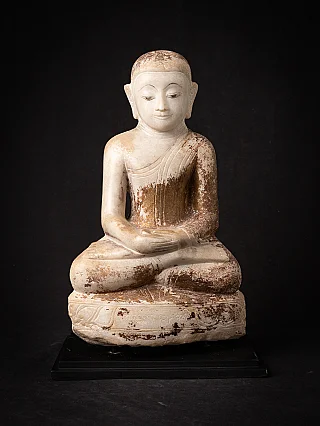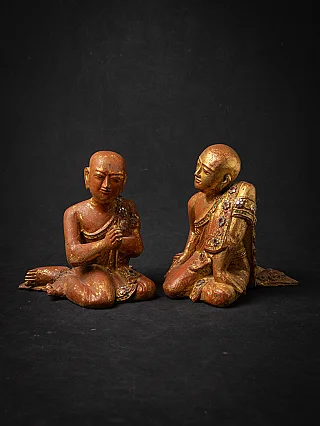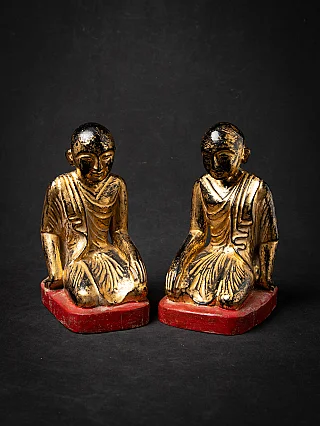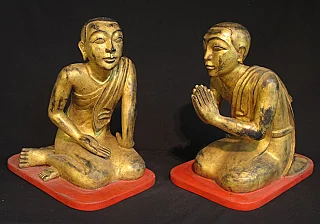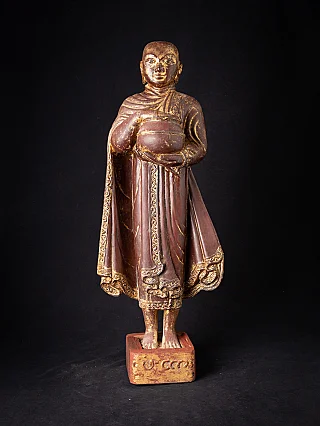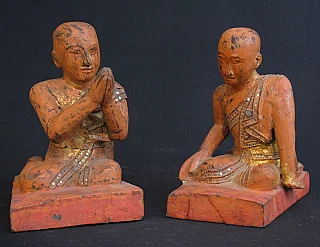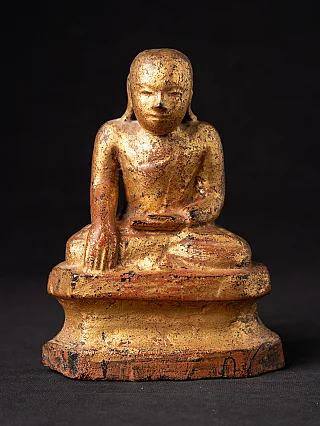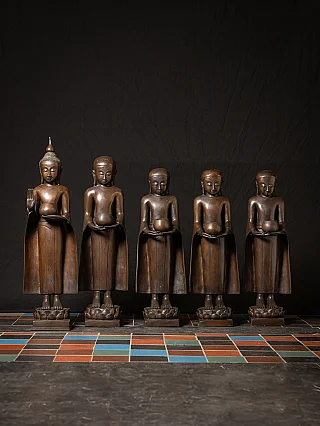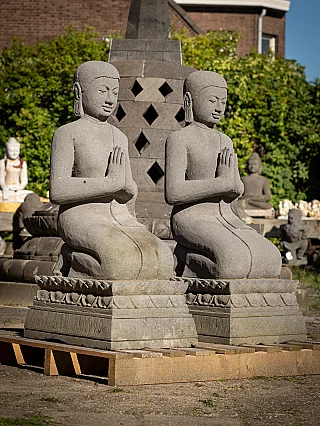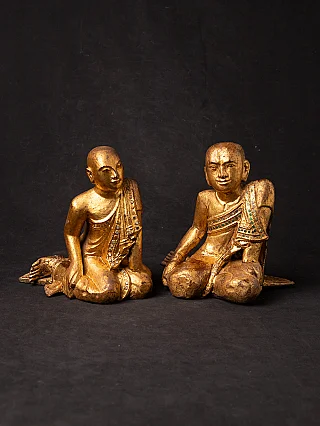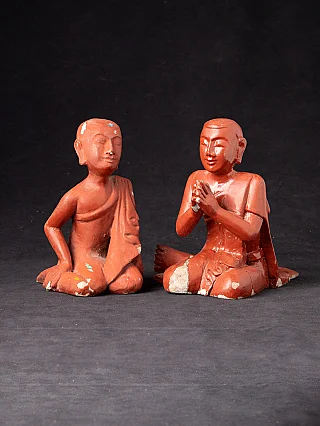Sanghati - Monastic Robe
Author : Peter Vredeveld

The tradition of wearing monastic robes is common for Buddhist monks and nuns, and this tradition may date back to the time of Lord Buddha himself, almost 2500 years ago.
Exclusive collection of statues
The tradition of wearing monastic robes, known as Kasaya, is deeply rooted in Buddhist monk's and nuns' practices, tracing back to the time of Lord Buddha, nearly 2500 years ago. These robes, often named after the saffron dye they were originally dyed with, symbolize a life of renunciation and commitment to the spiritual path. This article delves into the historical origins, significance, and variations of the Kasaya across different Buddhist traditions.
Origins of the Monastic Robe
The practice of monastic robes dates back to the Buddha's lifetime. Initially, monks adorned themselves with robes made from discarded fabric, embodying the principles of simplicity and detachment. In both Sanskrit and Pali, these garments are called "civara," indicating a robe worn without concern for color or style. This tradition underscores the Buddhist path's core values of modesty and non-attachment to material possessions.
Robe During Buddha's Time
Historical Buddhist art from regions like India and China often depicts Lord Buddha in red robes, highlighting the spiritual and cultural significance of the Kasaya. As the Sangha, or Buddhist monastic community, grew, specific regulations regarding monastic attire were established. These guidelines, recorded in the Vinaya-Pitaka of the Pali Canon or Tripitaka, advocated for robes made of "pure cloth," signifying unwanted or discarded materials, embracing humility and simplicity.
Three Piece of Kasaya
In Theravada Buddhism, the Kasaya comprises three parts, collectively known as the "Triple Robe" or "Tricivara." This ensemble, believed to have remained unchanged since the Buddha's time, includes:

- Uttarasanga: The main robe covering the body, leaving the right shoulder uncovered, symbolizing readiness for work.
- Antaravasaka: The inner garment covering the lower body.
- Sanghati: The outer robe used for additional warmth or formal occasions.
Nuns in the Sangha wear a five-fold robe, which includes the same three pieces as the monks' robes, plus two additional garments: the Samkacchika, worn under the Uttarasanga, and the Udakasatika, a bathing cloth.
Monastic Robe in Tibetan Buddhism
Tibetan Buddhism, following the Mulasarvastivada Vinaya, distinguishes itself with red robes. The distinctive attire of Tibetan monks and nuns includes various robes, hats, and capes, each with its significance and use. The primary garments are:
- Dhonka: A wrap shirt with cape sleeves, symbolizing modesty.
- Shemdap: A maroon skirt representing the monastic vow of celibacy.
- Chogyu: A ceremonial robe similar to the Sanghati, yellow in color, denoting wisdom.
- Zhen – like chogyu but maroon and used for day-to-day wear
- Namjar – larger than chogyu and are made with more patches and used for formal ceremonial occasion.
Kasaya in Chinese Buddhism
In Chinese Buddhism, Buddhist monks typically wore a red monastic robe. In some period of Chinese Buddhism, color of robes was considered as the medium to differentiate the monastics in China. The Kasaya is called Jiasha. But during the reign of Tang Dynasty, Chinese Buddhist monastics started a tradition to wear greyish-black robe and was referred as “ Ziyi ”.
The Symbolism and Significance of Kasaya
The Kasaya is not merely a piece of clothing but a profound symbol of the Buddhist monastic life. It represents the wearer's commitment to following the Buddha's teachings, leading a life of simplicity, and practicing meditation and mindfulness. The color and style of the robes serve as a constant reminder of the vows of poverty, chastity, and obedience that monks and nuns take upon entering the Sangha.
Contemporary Practices
Today, the tradition of wearing Kasaya continues in Buddhist communities worldwide, though styles and colors may vary according to different schools and cultural contexts. These robes remain a powerful symbol of unity, discipline, and devotion to the spiritual journey, transcending geographical and sectarian boundaries.
The enduring practice of wearing monastic robes, or Kasaya, reflects Buddhism's core values and teachings. As Buddhism adapts to the modern world, the Kasaya symbolizes the timeless pursuit of enlightenment and liberation.
Understanding Buddhist monastic robes' history, symbolism, and variations offers insights into the rich tapestry of Buddhist tradition and practice. It underscores the religion's emphasis on modesty, renunciation, and the universal quest for spiritual awakening.
Share this page

















